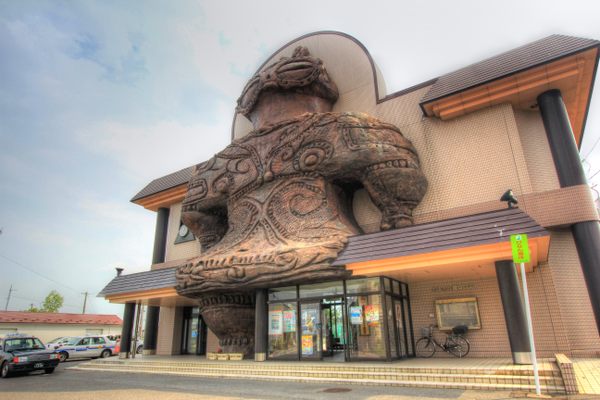About
The Shakōki-dogū figurines were created during the Jōmon era of prehistoric Japan, noted for their depiction of human eyes, which are often compared to Inuit ski goggles or shakōki in Japanese. Some theorized they may have depicted a fertility goddess, the mysterious deity Arahabaki, or even ancient astronauts.
First founded in 1924, Kizukuri Station has served as a station on the Gonō Line. A new building was constructed in 1992, making use of the Hometown Rejuvenation Program. The city of Tsugaru refurbished the station utilizing concrete and adding a giant replica of a Shakōki-dogū to its exterior wall.
This particular dogū was modeled after one excavated from the Kamegaoka Stone Age Site, approximately six miles from the station. It's quite possibly the most famous example of the shakōki-type figurines, today exhibited at the Tokyo National Museum in Ueno.
Standing a little less than 58 feet (17 meters) tall, the station's replica dogū is locally nicknamed Shako-chan. Its LED eyes blink every time a train arrives at the station, humorously dubbed the Welcome Beams. The lights were renovated in 2020 and they now contain seven colors and four patterns.
Related Tags
Hidden Japan: Sado Island, Nara & Kyoto
Explore a different side of Japan.
Book NowCommunity Contributors
Added By
Published
August 4, 2020














































